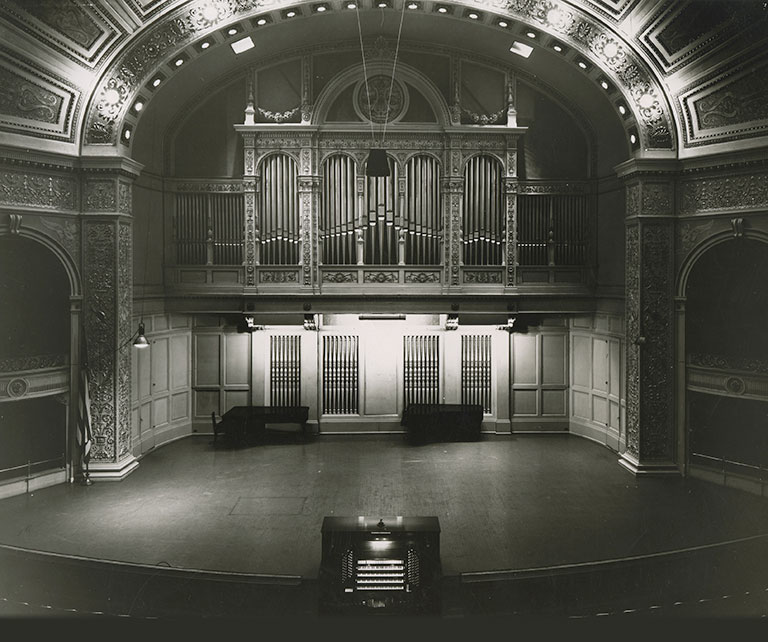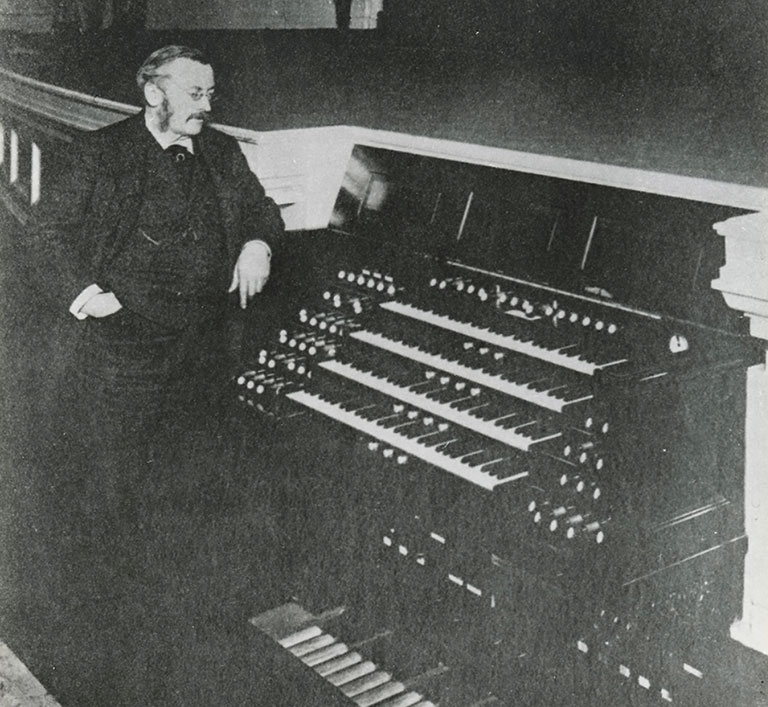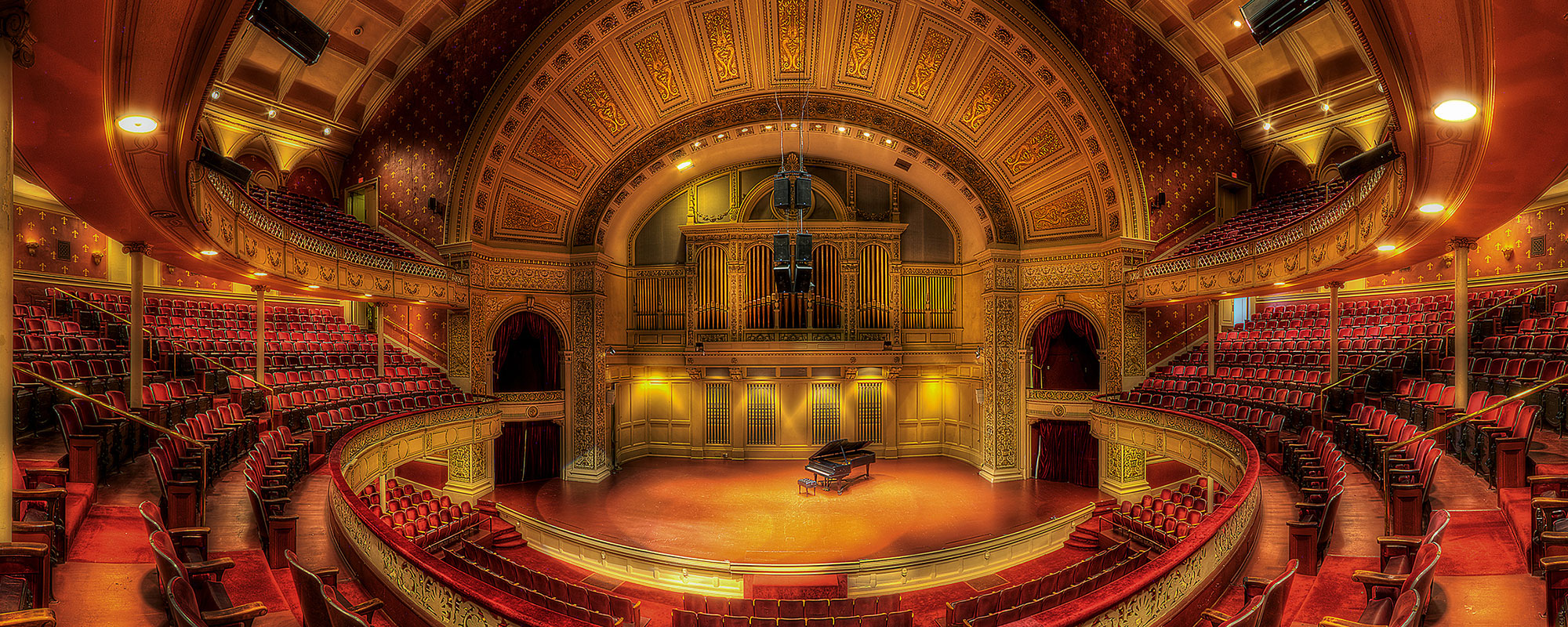You May Also Like
A Lifelong Love of Astronomy Closer Look: Walking the Land Restoring A ‘Palace of Music’Over the past few decades, few people have seen it: the 124-year-old pipe organ that, in its heyday, would rise from its custom-built platform beneath the front of the Carnegie Music Hall stage to the delight of enthusiastic audiences. It still resides there, hidden, in the historic house of culture that Andrew Carnegie built, and most of its pipes—8,600 of them—remain in glorious view as the backdrop to the stage.

An early view of the Carnegie Music Hall stage featuring the pipe organ.
Carnegie gifted the organ to Pittsburgh in 1895, when he opened his great library and museum building. The philanthropist would give more than 7,600 pipe organs to libraries, churches, and civic organizations. It was another way for him to share with the world something he loved. And he loved organ music—so much so that he had pipe organs in his New York home and his Skibo Castle in Scotland.
The first director of Carnegie Music Hall, Frederic Archer, loved organ music, too. Handpicked by Carnegie, the British-born composer and conductor was considered an organ virtuoso, and he gave hundreds of free organ recitals during his six-year tenure. For many more decades, his suc-cessors would carry on that tradition—through the 1970s, in fact.

Frederic Archer, the first to play the pipe organ, between 1895–1901.
As organists and Music Hall directors came and went, the Music Hall organ would continue to be transformed through a series of reconstructions, the most significant taking place in the early 1900s when the Aeolian-Skinner Organ Company gave it an inspiring makeover. The instrument received a modern console and keyboard in the 1930s, and more modernization in the 1950s.
With the popularity of organ music having waned over the past few decades, today the organ is rarely seen, let alone heard. Making it concert-ready takes time, money, and a skill set that gets rarer by the year.
The last man to give it a shot was Robert Copeland. In an August 21, 2016, article in the Pittsburgh Tribune-Review, Copeland spoke about his career playing and tuning organs. At the time, he was still the organist at St. John’s Harrold Reformed United Church of Christ in Greensburg and still operating his Jeannette-based Robert Copeland Pipe Organ Co.
According to Copeland, after working on at least 1,500 organs, the pinnacle of his career came in 2008, when he was hired to restore Carnegie Music Hall’s grand pipe organ.
“It was like a mountain climber reaching the top of Mt. Everest,” Copeland told the newspaper. “I work mainly on church organs now, but working on that was the love of my life.”
Copeland performed a host of renovations on the century-old organ. Not enough to bring it back to its full glory, but just enough to allow it to be the star of the Organ Historical Society’s 2010 national convention in Pittsburgh, when it was heard again by an audience that was no doubt smitten by the rare performance of a piece of musical history.
Receive more stories in your email
Sign upTags:
Behind the Scenes
